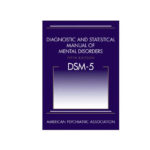The relationship between depression and nerve pain is intricate and multifaceted. Both conditions can significantly impact an individual’s quality of life, and their intersection can be particularly challenging.
For many, the physical discomfort of nerve pain is compounded by the emotional distress of depression, creating a cycle that can be difficult to break. As such, selecting the right antidepressant is not just about alleviating depressive symptoms; it’s also about addressing the underlying nerve pain.
The importance of this choice cannot be overstated. The right medication can offer relief, improve daily functioning, and enhance overall well-being.
Conversely, the wrong choice can exacerbate symptoms, lead to unwanted side effects, and further complicate the treatment process. This underscores the need for a comprehensive understanding of the available options and their respective benefits and limitations.
Types of Antidepressants

Tricyclic Antidepressants (TCAs)
Tricyclic Antidepressants (TCAs) have been a cornerstone in the treatment of various forms of depression. Their role in managing neuropathic pain has also been well-established.
Mechanism of Action
TCAs function by inhibiting the reuptake of serotonin and norepinephrine, neurotransmitters in the brain. This leads to an increased concentration of these neurotransmitters in the synaptic cleft, which can enhance mood and alleviate pain (Finnerup et al., 2015).
Efficacy in Nerve Pain Treatment
TCAs have demonstrated efficacy in treating neuropathic pain. Their analgesic properties are believed to be distinct from their antidepressant effects, meaning they can provide pain relief even in patients who are not depressed (Moisset et al., 2021).
Common TCAs Used
Amitriptyline, nortriptyline, and desipramine are among the commonly prescribed TCAs for nerve pain. Each has its unique side effect profile and potential drug interactions, necessitating a tailored approach to treatment (Szok et al., 2019).
Selective Serotonin Reuptake Inhibitors (SSRIs)
Selective Serotonin Reuptake Inhibitors (SSRIs) are primarily known for their role in treating depression. However, their potential in managing neuropathic pain has been a topic of interest in recent years.
How SSRIs Work
SSRIs function by selectively inhibiting the reuptake of serotonin, a neurotransmitter in the brain. This leads to an increased concentration of serotonin in the synaptic cleft, which can enhance mood (Shelton, 2019).
Limited Role in Nerve Pain Management
While SSRIs have proven efficacy in treating depression, their role in neuropathic pain management is still under investigation. Some studies suggest that they may have a limited role in this regard, especially when compared to other classes of antidepressants like TCAs and SNRIs (Moisset et al., 2021).
Potential Complementary Benefits
Despite the limited direct analgesic effects, SSRIs might offer complementary benefits for neuropathic pain patients, such as improved mood and sleep, which can indirectly influence pain perception (Szok et al., 2019).
Serotonin-Norepinephrine Reuptake Inhibitors (SNRIs)

Serotonin-Norepinephrine Reuptake Inhibitors (SNRIs) are a class of antidepressants that have shown promise in the treatment of both depression and neuropathic pain.
SNRIs Mechanism of Action
SNRIs function by inhibiting the reuptake of both serotonin and norepinephrine, neurotransmitters in the brain. This dual action results in an increased concentration of these neurotransmitters in the synaptic cleft, which can enhance mood and potentially alleviate pain (Szok et al., 2019).
Primary Choice for Nerve Pain
SNRIs, particularly duloxetine, have been recognized as effective treatments for neuropathic pain. Their dual reuptake inhibition mechanism offers a unique advantage in managing pain, especially when compared to SSRIs (Gilron et al., 2015).
Popular SNRIs for Nerve Pain
Duloxetine and venlafaxine are among the commonly prescribed SNRIs for neuropathic pain. Their efficacy in pain management, combined with their antidepressant properties, makes them a valuable option for patients suffering from both depression and neuropathic pain (Attal, 2019).
Atypical Antidepressants

Atypical antidepressants are a diverse group of drugs that don’t fit neatly into any of the other classes of antidepressants. They have unique mechanisms of action and are often considered when patients don’t respond to other treatments.
Diverse Mechanisms of Action
Unlike other classes of antidepressants, atypical antidepressants have varied mechanisms of action. Some may affect serotonin or norepinephrine, while others might influence dopamine or other neurotransmitters (Mattia & Coluzzi, 2003).
Role in Nerve Pain Treatment
Some atypical antidepressants have shown promise in treating neuropathic pain. Their unique mechanisms can offer pain relief, especially in cases where traditional treatments have failed (Reisner, 2003).
Specific Atypical Antidepressants for Nerve Pain
Bupropion, mirtazapine, and trazodone are examples of atypical antidepressants. Their use in neuropathic pain is still under investigation, but preliminary findings suggest potential benefits (Bravo et al., 2019).
Evaluating the Best Antidepressant for Nerve Pain

Choosing the right antidepressant for nerve pain is a multifaceted process. It requires a comprehensive understanding of the individual’s medical history, the specific nature of their pain, and the potential benefits and risks of various treatments.
Individual Factors
Personalized Treatment
Every patient’s experience with neuropathic pain is unique. Factors such as the cause of the pain, its duration, intensity, and the presence of other symptoms can influence the choice of treatment (Finnerup et al., 2015).
Consideration of Coexisting Conditions
Many patients with neuropathic pain may have coexisting medical conditions. The presence of conditions like anxiety, insomnia, or other chronic diseases can influence the choice of antidepressant (Moisset et al., 2020).
Tolerability and Side Effects
The potential side effects of an antidepressant and its interaction with other medications the patient might be taking are crucial considerations. It’s essential to choose a drug that the patient can tolerate well (Ferreira et al., 2023).
Medical Professional Guidance
Consultation with a Physician
A thorough evaluation by a physician, preferably a pain specialist or neurologist, is crucial. They can provide insights into the most suitable treatment options based on the patient’s specific circumstances (Gilron et al., 2015).
Specialized Pain Management Clinics
These clinics offer a multidisciplinary approach, combining medication with other therapies like physical therapy, counseling, and alternative treatments (Attal, 2019).
Monitoring and Adjusting Medication
Regular follow-ups are essential to monitor the effectiveness of the treatment and make necessary adjustments. This ensures that the patient receives optimal pain relief with minimal side effects (Moisset et al., 2020).
Patient Experiences

The lived experiences of patients provide invaluable insights into the effectiveness and tolerability of treatments for nerve pain. Their stories shed light on the real-world implications of medical interventions, offering a more comprehensive understanding of the journey from diagnosis to management.
Post-herpetic Neuralgia (PHN) Experiences
Post-herpetic neuralgia (PHN) is a chronic neuropathic pain condition that persists for at least three months following a shingles outbreak. Shingles, also known as acute herpes zoster, results from the reactivation of the dormant varicella zoster virus in individuals who have previously had chickenpox.
Patients with PHN often describe enduring various types of pain, including constant deep, aching, or burning sensations, sharp lancinating pain, hyperalgesia (where painful stimuli are perceived as more painful than they should be), and allodynia (pain resulting from typically non-painful stimuli).
The treatment of PHN can involve a combination of medications, including alpha-2 delta ligands (e.g., gabapentin and pregabalin), tricyclic antidepressants, topical analgesics, and opioids. However, the side effects associated with some of these medications can limit their use, emphasizing the importance of personalized treatment strategies based on individual patient responses (Hadley et al., 2016).
Support Groups and Online Communities
Engaging with support groups and online communities can be therapeutic for many patients. These platforms offer a safe space for individuals to share their experiences, seek advice, and find solace in the knowledge that they are not alone in their journey. The collective wisdom of these communities often provides practical tips and coping strategies that might not be readily available in clinical settings.
Learning from Others’ Successes and Challenges
Every patient’s journey is unique, but there are often common threads that can provide guidance for others. By listening to and learning from the experiences of others, patients can gain insights into potential treatment options, strategies for managing side effects, and ways to improve their overall quality of life.
Emerging Treatments and Future Possibilities

The realm of neuropathic pain management is ever-evolving, with continuous advancements in both understanding and treatment. As research progresses, new avenues for alleviating nerve pain emerge, offering hope to those affected.
Liquid-biopsy Proteomics and AI in Disease Detection:
A groundbreaking study titled “Liquid-biopsy proteomics combined with AI identifies cellular drivers of eye aging and disease in vivo” has shed light on the potential of integrating proteomics of liquid biopsies with single-cell transcriptomics. This approach is particularly significant for non-regenerative organs like the eye and brain, where tissue biopsies could cause irreversible damage.
By analyzing the aqueous humor, the study identified the cellular origin of nearly 6,000 proteins. Notably, the research unveiled that retinal degeneration occurs in Parkinson’s disease and highlighted the changing cellular drivers in diabetic retinopathy based on the disease stage.
Furthermore, the study employed artificial intelligence (AI) models to assess individual cellular aging, revealing that many eye diseases, not typically associated with chronological age, undergo accelerated molecular aging of specific cell types.
This innovative approach, applicable to various organ systems, holds immense promise for transforming molecular diagnostics and prognostics, potentially unveiling new cellular disease and aging mechanisms.
While considering treatments for nerve pain, it’s important to explore options beyond traditional antidepressants, especially if you’re seeking better quality remission in depression.
FAQ
How do antidepressants differ from typical painkillers in treating neuropathic pain?
Antidepressants primarily target the central nervous system and modify neurotransmitter levels to alleviate pain, whereas typical painkillers, like NSAIDs, target inflammation and pain pathways directly. Antidepressants can address both the emotional and physical aspects of pain, making them particularly effective for neuropathic pain, which often has a central component.
Are there any natural alternatives to antidepressants for managing nerve pain?
Some individuals find relief from neuropathic pain using natural remedies like capsaicin (derived from chili peppers), acupuncture, or certain dietary supplements. However, the efficacy of these treatments varies, and they should be discussed with a healthcare professional before use.
How long does it typically take for antidepressants to show effects on nerve pain?
The onset of pain relief from antidepressants can vary. Some patients may notice improvements within a week, while others might need several weeks. It’s crucial to maintain regular communication with a healthcare provider to monitor and adjust treatment as necessary.
Can I stop taking antidepressants if my nerve pain improves?
It’s essential not to stop taking antidepressants abruptly. Even if the pain improves, discontinuing the medication suddenly can lead to withdrawal symptoms or a potential relapse in pain. Always consult with a healthcare provider before making changes to medication.
Conclusion
Neuropathic pain, a complex and often debilitating condition, requires a multifaceted approach for effective management. The intersection of depression and nerve pain further complicates the treatment landscape, emphasizing the importance of selecting the right antidepressant.
As research continues to unveil new insights, from the molecular mechanisms underlying nerve pain to the real-world experiences of patients, a more comprehensive understanding of the condition emerges. This knowledge, combined with advancements in treatment modalities, offers hope for improved patient outcomes.
Collaborative care, informed decision-making, and a commitment to ongoing research are paramount in the journey towards finding relief from nerve pain.







